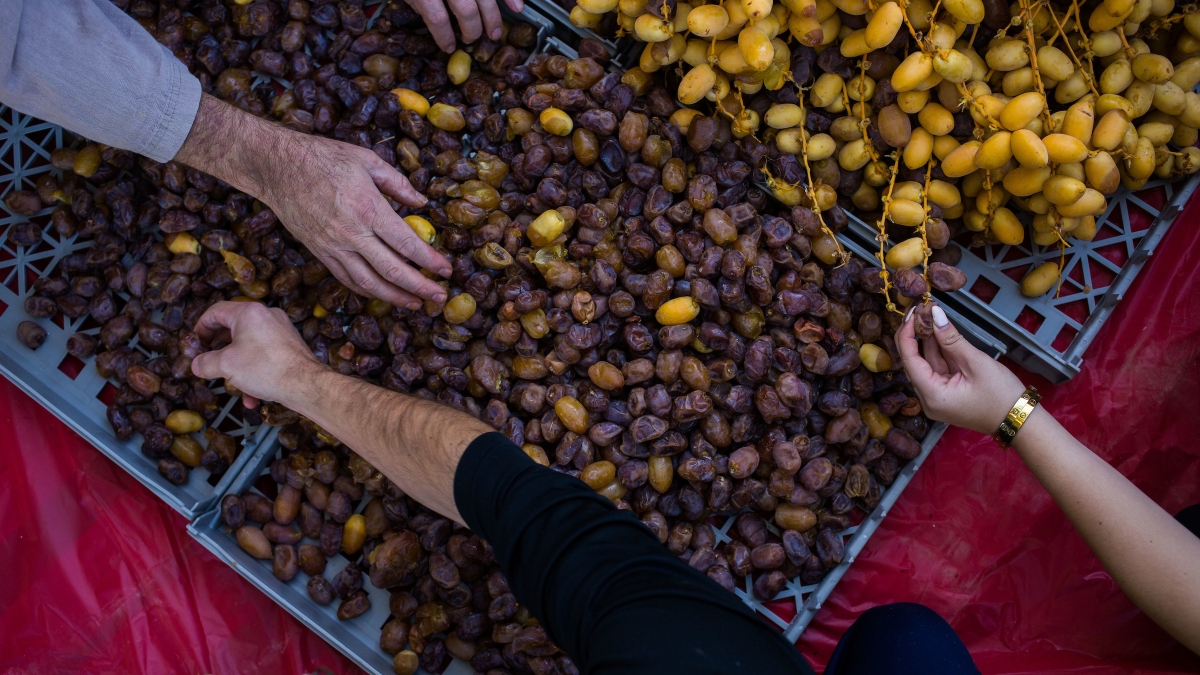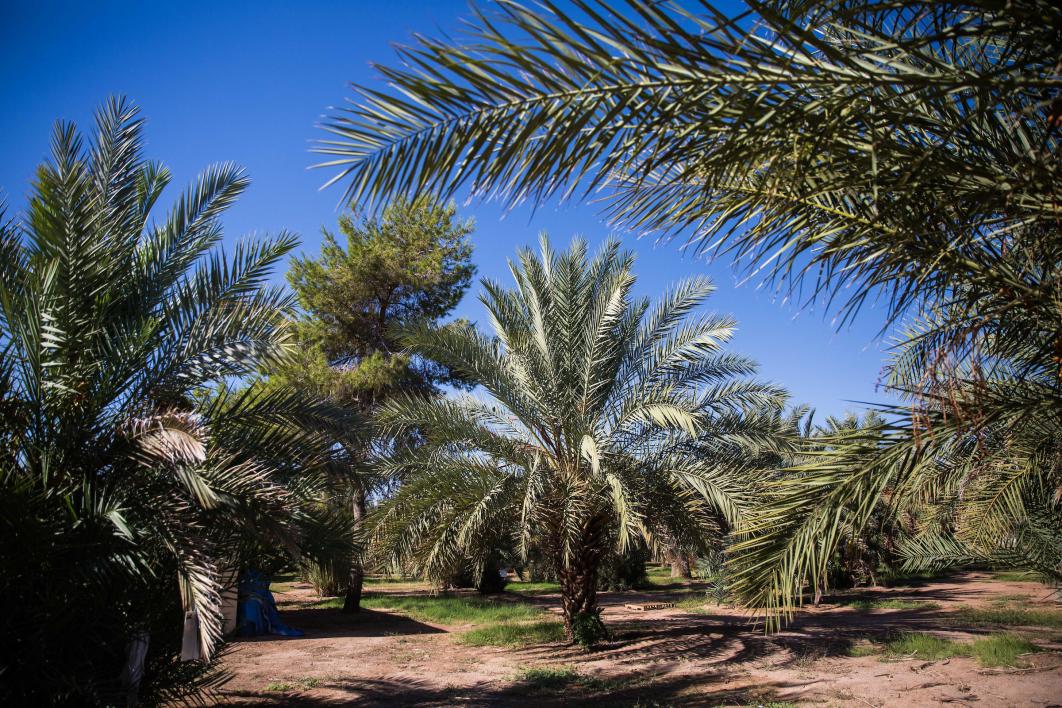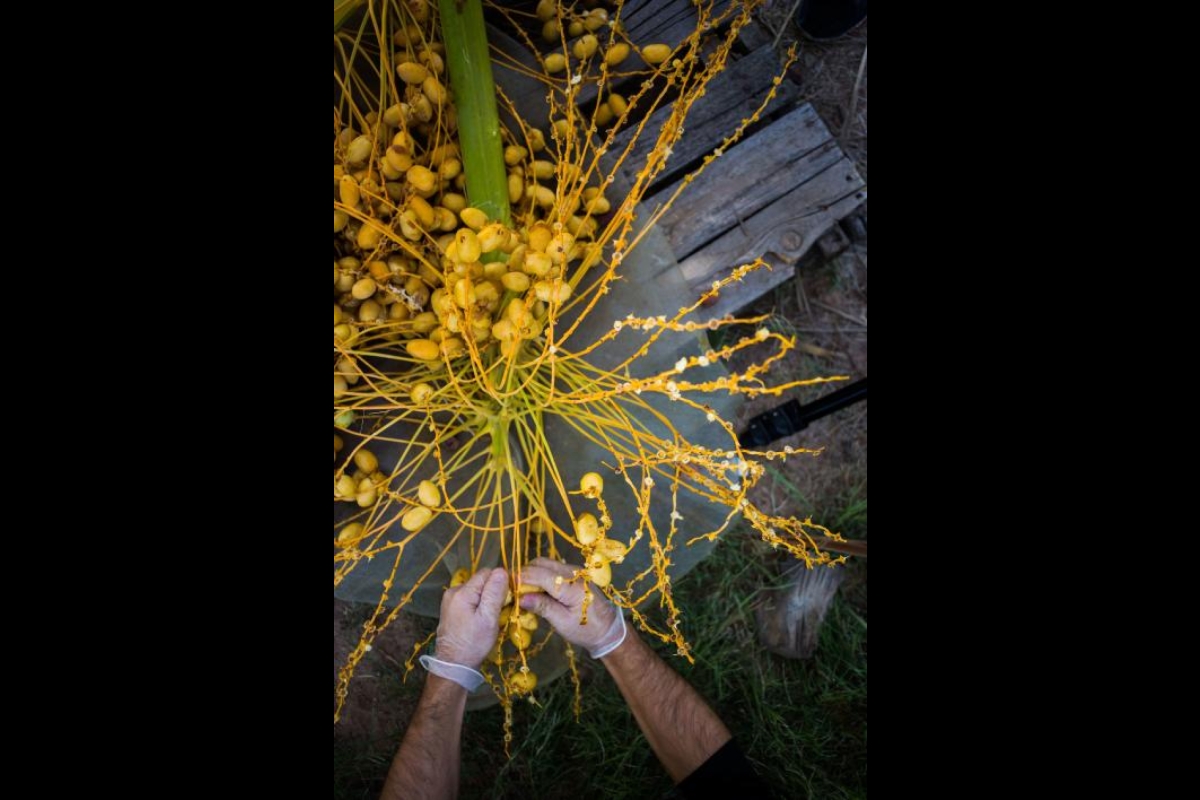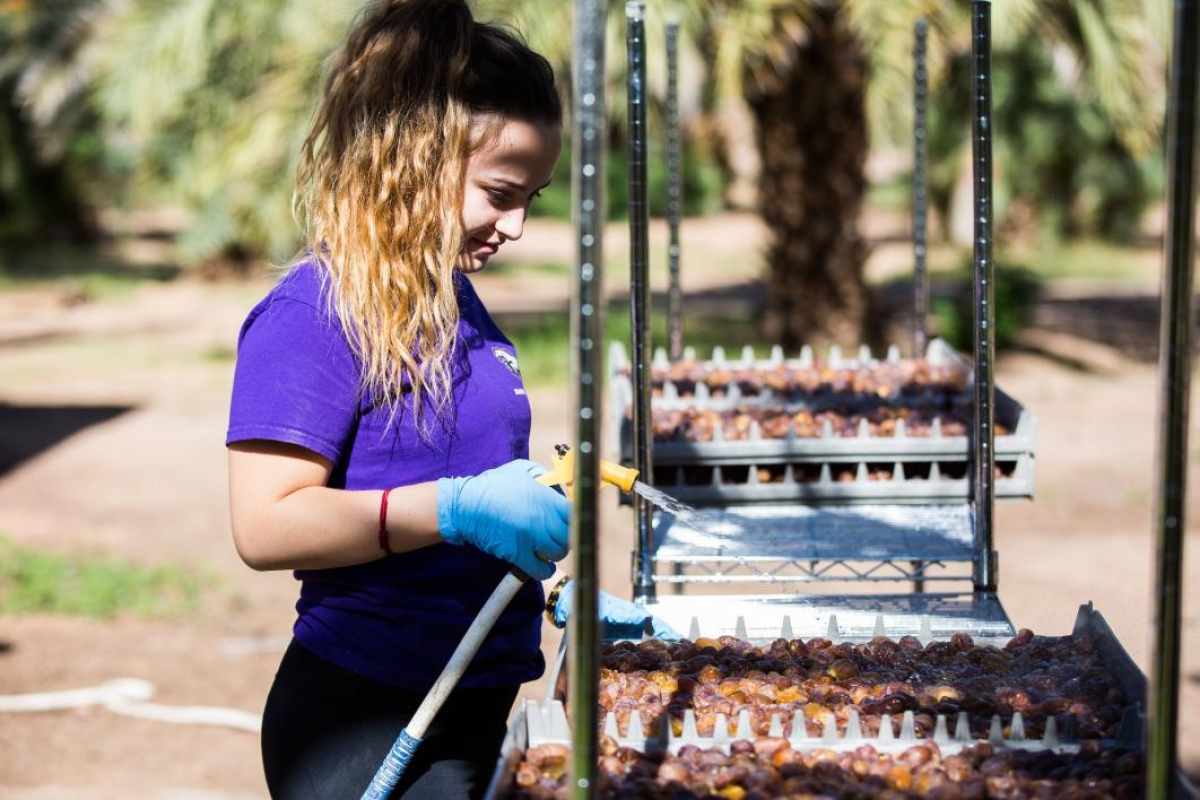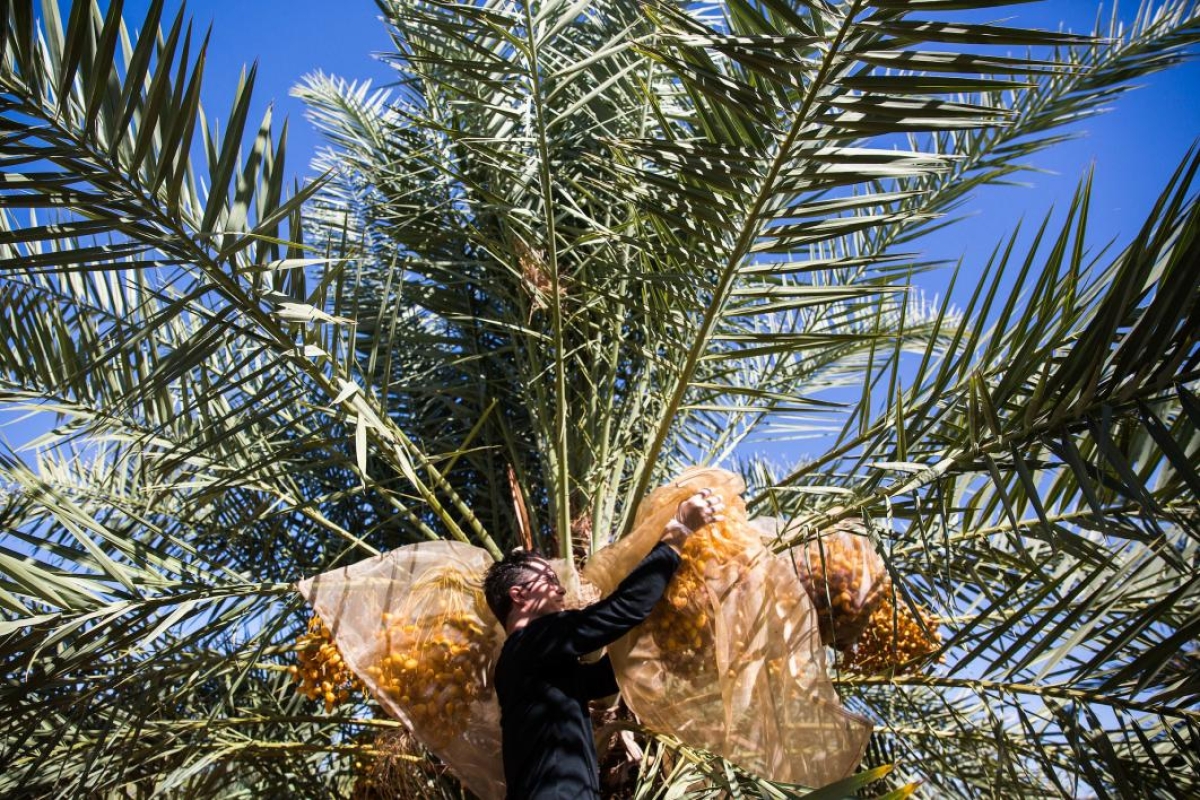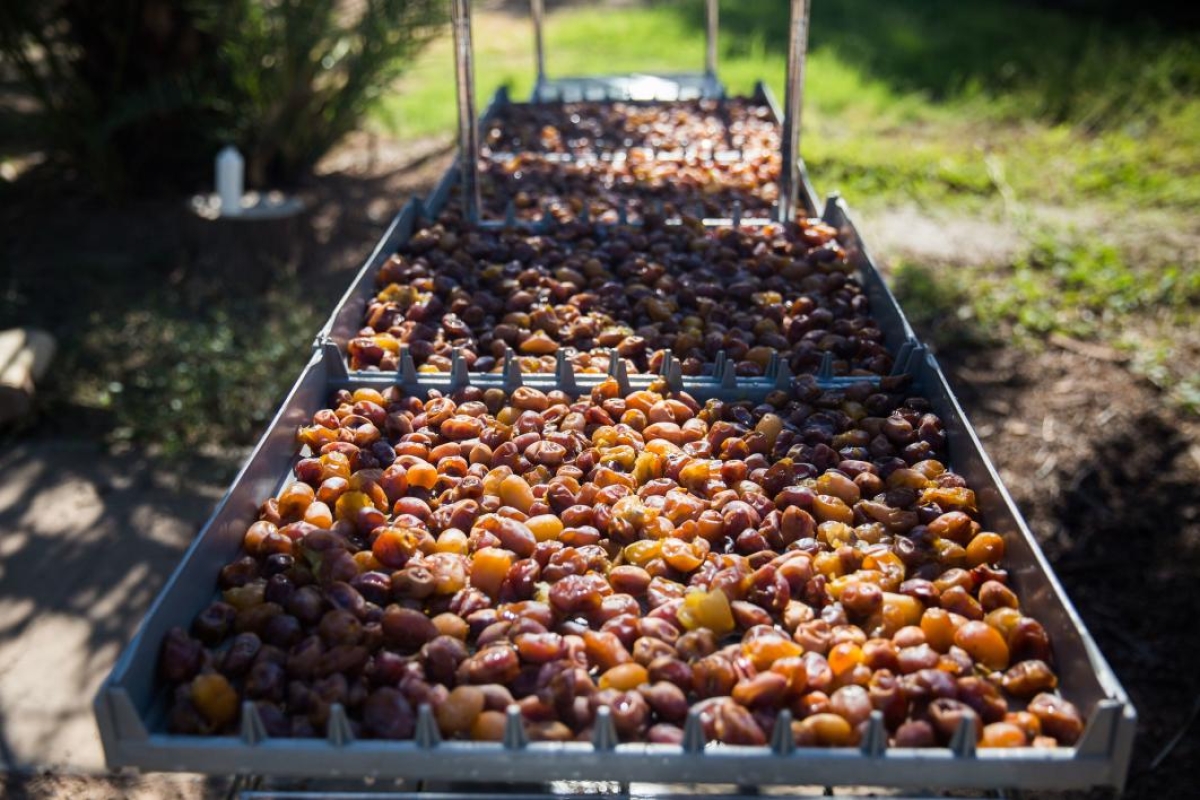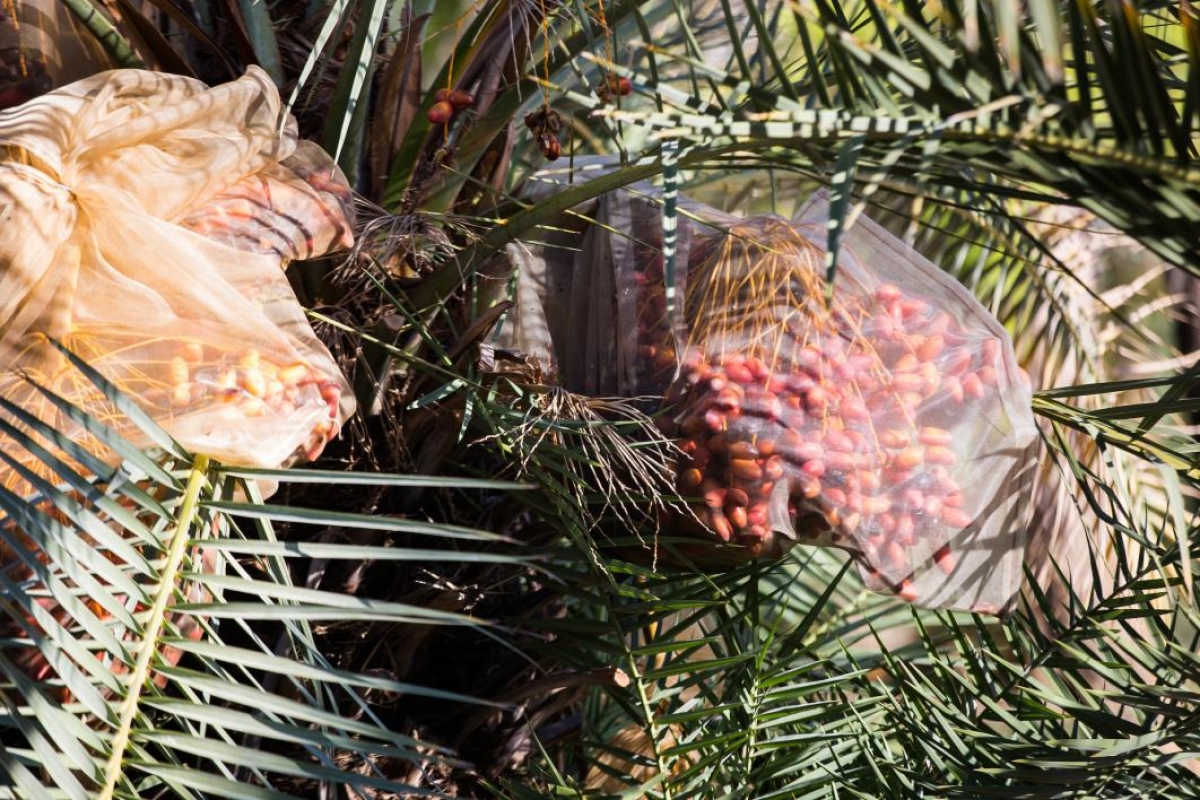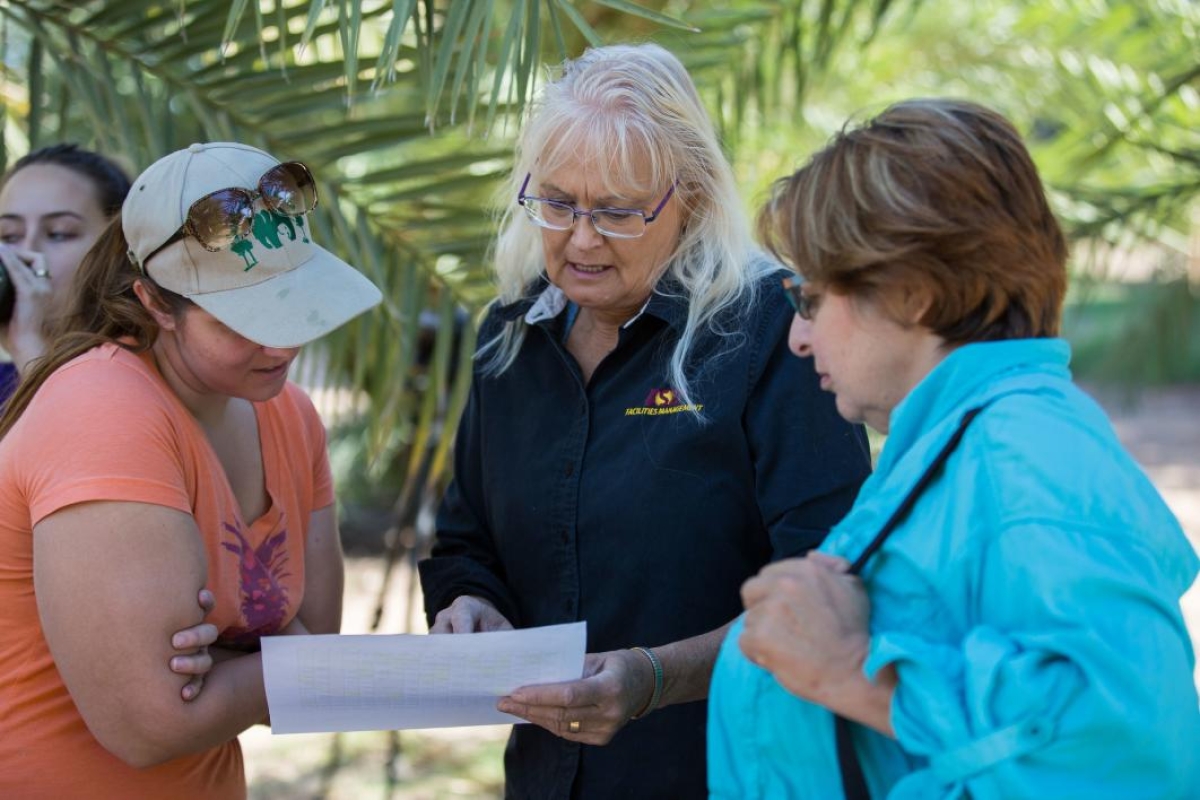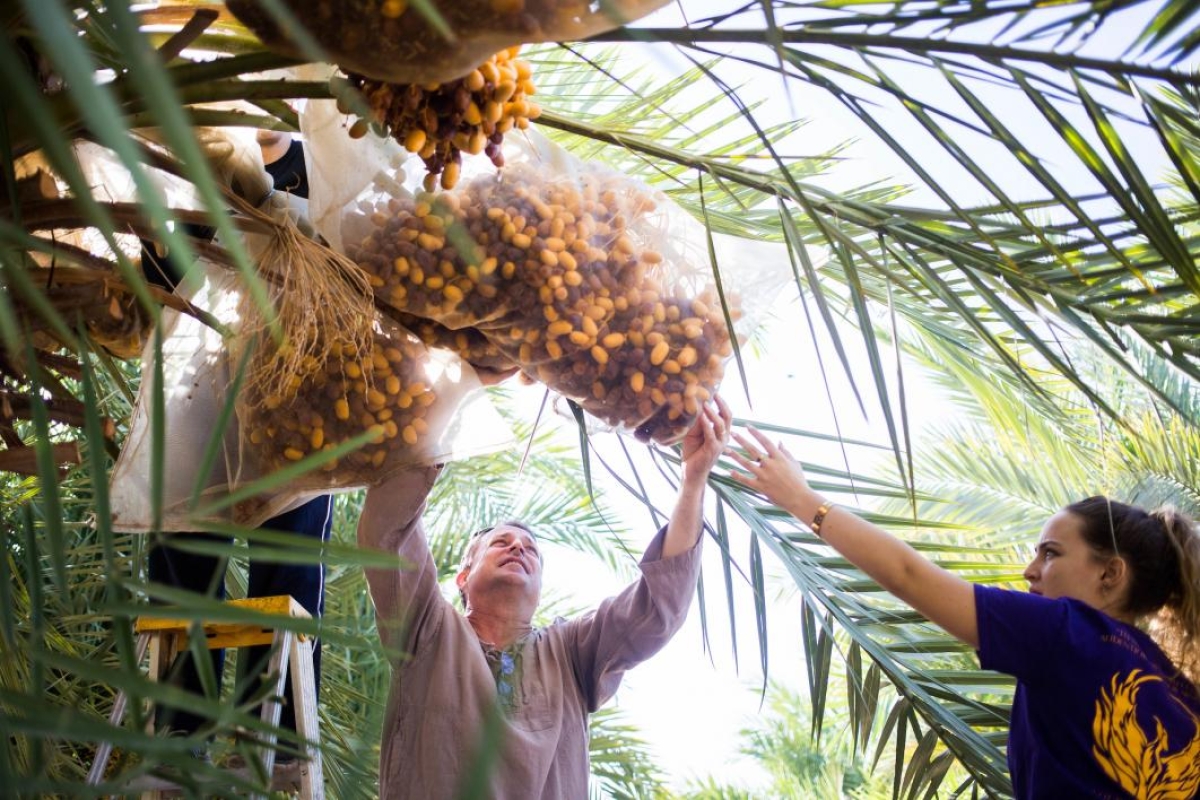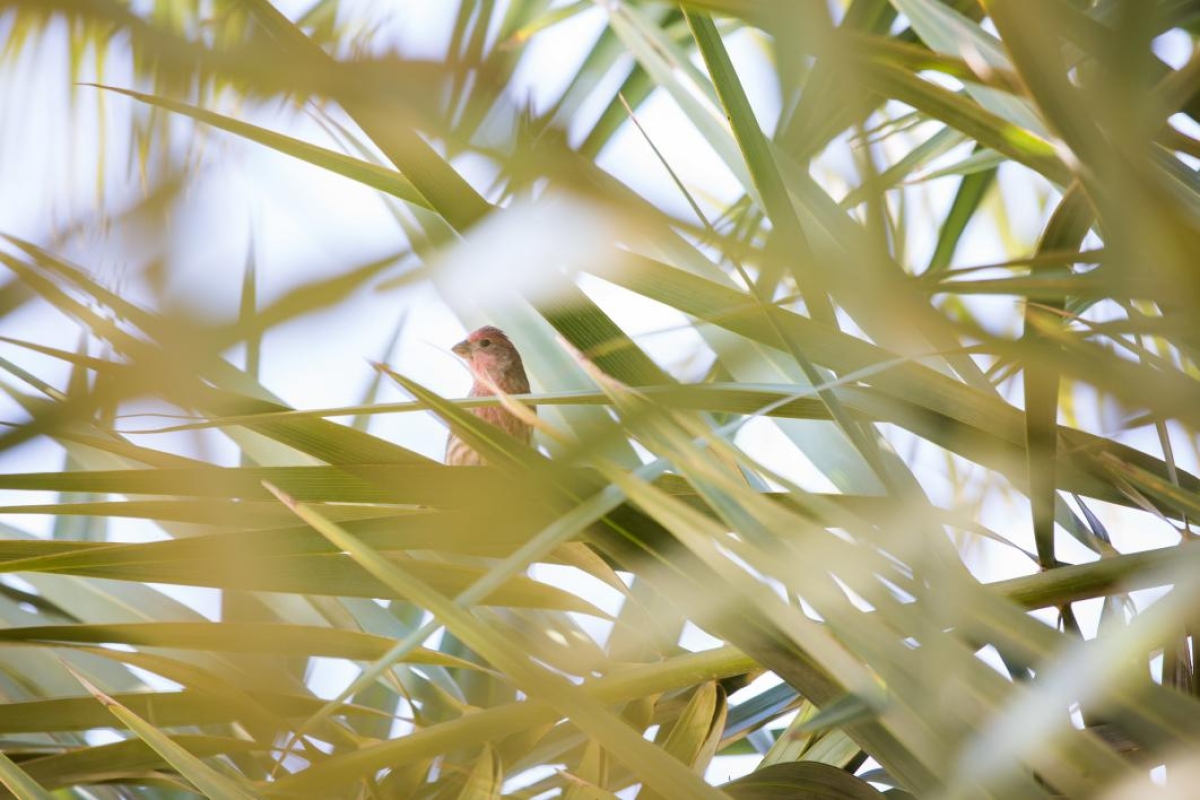Editor's note: This story is being highlighted in ASU Now's year in review. To read more top stories from 2016, click here.
A century ago, date palms in the Salt River valley weren’t just for decoration, and any Phoenician you met could tell you their top five date varieties.
Today most people have never even tried one.
As Phoenix grew, the date palms disappeared, replaced with homes and strip malls. But on ASU’s Polytechnic campus in Mesa, the date is not only alive and well, but making a comeback.
That’s where professor Deborah Thirkhill comes in. She manages ASU’s date palm “germplasm” consisting of more than 40 varieties of rare date palms. A germplasm is a collection that is a living genetic resource maintained for plant breeding and research — kind of a grove with serious scientific chops.
Thirkhill’s goal is to introduce all ASU students to the sweet fruit that 100 years ago was as common as candy bars are today.
“A lot of students that come from all over the world [to ASU] have never tasted a date before,” said Thirkhill, the coordinator for the Date Palm Germplasm. “We hand them out for students to try and see if they like the date and expand the date market and get more people enjoying this delicious candy-like fruit.”
The date palm grove — or germplasm — at the ASU Polytechnic campus in Mesa. Photo by Deanna Dent/ASU Now
The unruly and bristly Polytechnic date palm grove is one of the most genetically diverse collections in the Western Hemisphere, second only to the U.S. Department of Agriculture collection in Thermal, California. In 1929, the USDA banned all importation of Old World date palm shoots due to pests and fungus. That means the rare varieties are now only present in collections like the one at Polytechnic campus.
“They’ve been harvested by the Mesopotamians, the Egyptians, people in the Middle East and North Africa for at least 6,000 years, but probably much more than that,” said Scott Frische, curator of horticulture for the Phoenix Zoo, who volunteers regularly in maintaining the germplasm.
Dates, along with figs, are some of the world’s oldest cultivated fruit; no wild varieties exist today. The sweet fruits are usually 60-70 percent sugar, but healthier due to their fiber content, according to Sarah Martinelli, lecturer in ASU’s College of Health Solutions.
A few hundred years ago, the Spanish brought the first ones into Mexico as seedlings, which can be male or female and unpredictable in taste. As early as 1890 the USDA began importing shoots for farmers; a single importation in 1908 saw 491 live shoots representing 135 varieties arrive in Phoenix. The USDA saw the potentional for the date — water-hungry but humidity-intolerant— as perfect for Arizona farmers. One hundred years ago the Phoenix area was the primary commercial cultivation area in the country for the sweet fruit.
“We’re so fortunate on the ASU campus. Our department started collecting some of these rare varieties because a lot of these traditional date groves were being bulldozed for housing.” Thirkhill said. “They wanted to collect a lot of those rare cultivars that are here.”
Video: One quick and healthful way to use dates
The demise of the Valley’s commercial date production came after the end of World War II. While sugar had been rationed, a large market for dates had been created. But the end of the war reduced demand for the crops at the same time several years of heavy rains and freeze ruined yields.
All these factors, along with the introduction of air-conditioning, made it easy for farmers to sell their land rather than continue to care for their crops. The ASU collection helps keep rare varieties like the Rhars, Jarvis male palm and Black Sphinx date from completely disappearing from the Western Hemisphere.
Thirkhill, ASU students, staff and community volunteers work to harvest rare varieties than can only be tasted and purchased directly in the grove. Volunteers are rewarded for their hard work with bags of dates to take home that are found nowhere else.
The process begins in late winter and early spring when Thirkhill and her volunteers cut male stalks and hand-pollenate the different cultivars in the grove. As the fruit develops, volunteers return to thin out branches of the fruit to reduce weight and eventually bag them to prevent pesky invaders such as birds, bees and wasps that can make short work of the grove.
The fruits can ripen starting in September, but the October is the main harvest month. Thirkhill leads her volunteers in harvesting hundreds of pounds of dates both in the Polytechnic grove and around the Tempe campus, where a few varieties grow. The Tempe harvest begins this Friday morning, Oct. 7.
One of those volunteers is Mick Dalrymple, director of University Sustainability Practices. On a Saturday late in September, he was at the Polytechnic grove with his daughter to cut branches and separate dates.
“It was like a curiosity as to how the whole thing works and how to do you know a good date from a bad date,” Dalrymple said, who spent nearly three hours pruning a tree with several other people. “It was like 150 pounds, enough for a whole day’s worth of effort, and that was what surprised me the most was just the volume, what you can get off of one tree.”
Dalrymple took his dates to his mother’s birthday party. He created a taste-testing session with family and friends, asking them to write their reviews of the nine different varieties.
Most Americans have only ever tried Medjool and Deglet Noor dates, which are “hard” enough at harvest that they can be rolled down a ramp in commercial processing. Methods like tissue culturing have been seen as the advancement that could help resurrect commercial production of softer and sweet dates like the Amir Hajj or Bahri dates.
Tissue cultures take a small part of the growing point of a palm that is multiplied in test tubes, allowing for hundreds of palms to be developed from a single palm. The hope is that rare varieties like Phoenix’s own Black Sphinx date, which at one time numbered more than 15,000 in the Valley, could be grown in bulk for commercial farmers.
Professor Glenn C. Wright of the University of Arizona works in the expansion of UA’s date palm germplasm in Yuma, the third-ranked germplasm in the U.S. He highlighted the importance of tissue culture to redevelop rare-variety commercialization in Arizona.
“If you’re going to have a date industry ... you have got to have enough product to supply the Fry’s or the Costcos or the Sam’s Clubs of the world, and you can’t do that with three dozen palms,” he said. “You have to have four or five hundred acres minimum to start having sufficient volume to sell at the store where you’re average non-date lover can pick them up.”
As the industry adapts to provide more options for foodies, it’s collections like Polytechnic’s date palm germplasm that keep intact the rare varieties that hold promise for future Arizona residents and commercial development in the state.
Where to get dates
To buy: A variety of dates are available for purchase through the month of October, for $5/pound (cash only) at the following locations:
- Thursdays at Food Truck Thursdays on the Tempe campus
- Fridays from 10 a.m. to 3 p.m. in front of Wrigley Hall in Tempe
- Saturdays from 11 a.m. to 2 p.m. at the Polytechnic grove.
Shoots are also available for $60 at the Polytechnic location on Saturdays.
To help: Find out information about volunteering by contacting Deborah Thirkhill at deborah.thirkhill@asu.edu.
Video: Deborah Thirkhill explains the growing and harvest process.
Top photo: Volunteers sort through a branch of harvested dates that have been cut during the date harvest Sept. 24 at ASU's Polytechnic campus in Mesa. Photo by Deanna Dent/ASU Now
More Environment and sustainability

2 ASU faculty elected as AAAS Fellows
Two outstanding Arizona State University faculty spanning the physical sciences, psychological sciences and science policy have been named Fellows of the American Association for the Advancement of…

Homes for songbirds: Protecting Lucy’s warblers in the urban desert
Each spring, tiny Lucy’s warblers, with their soft gray plumage and rusty crown, return to the Arizona desert, flitting through the mesquite branches in search of safe places to nest.But as urban…
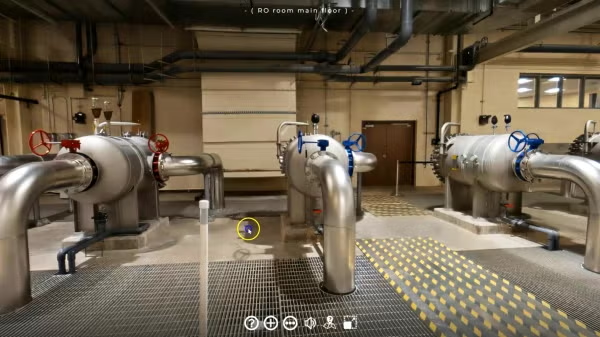
Public education project brings new water recycling process to life
A new virtual reality project developed by an interdisciplinary team at Arizona State University has earned the 2025 WateReuse Award for Excellence in Outreach and Education. The national …


